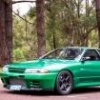Motul Oil – What Weight?
Announcements
-
Similar Content
-
Latest Posts
-
By Dose Pipe Sutututu · Posted
post up screen shots of your injector tables -
By joshuaho96 · Posted
Diagnostic flow for a code 21 says check signal at the ECU pins, on a voltmeter of some kind it should read 0.1V at idle, 0.12V cranking, 0.15-0.25V at 2000 rpm. Check each coil such that +1, -3 is infinite or very high resistance, -3, +2 should do the same. (-1, +3), (+3, -2), (+1, -2), and (-1, +2) should all be somewhere between 0 ohms and high resistance. If you trace the path from the coil pin all the way back to the ECU in the diagram the resistance you measure at the coil vs connected to the harness should be pretty much the same. -
By feartherb26 · Posted
I have an elite 2500 running an adapter harness on an rb25de neo r34. I took the butterfly out and removed all that junk. But I also went Plus+t at the same time. The butterfly thing works in reverse to the boost solenoid on the Gtt if that makes sense -
yeh they are 235/45/17 up front and 255/40/17 in the rears. I still didn't get my answer if i can fit a 18x9 up front. I want to get 4 of this and see if they will fit before committing as they didn't see an 18x8 as an option but there is a 18x9.5 also. Enkei RS05-RR 18x9 35mm ET 5x114.3 75.0 Bore Matte Gunmetal Wheel
-
This. The R34 handbrake icon DOES come up when the brake fluid level is low. You might be sitting right on that threshhold. I have been down this diagnosis path and this was the solution (and it was pretty much as full as your picture is to begin with).
-






Recommended Posts
Create an account or sign in to comment
You need to be a member in order to leave a comment
Create an account
Sign up for a new account in our community. It's easy!
Register a new accountSign in
Already have an account? Sign in here.
Sign In Now